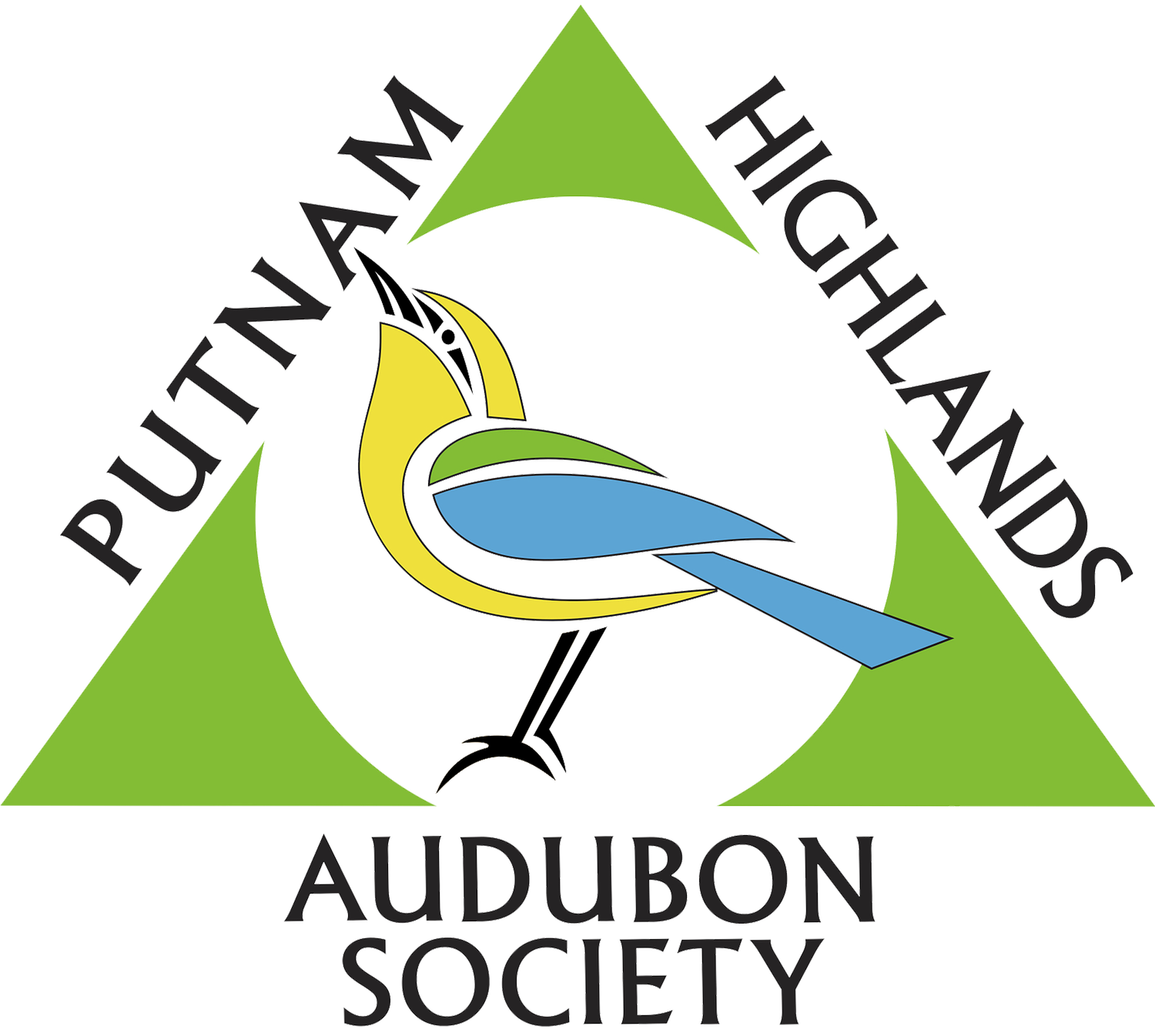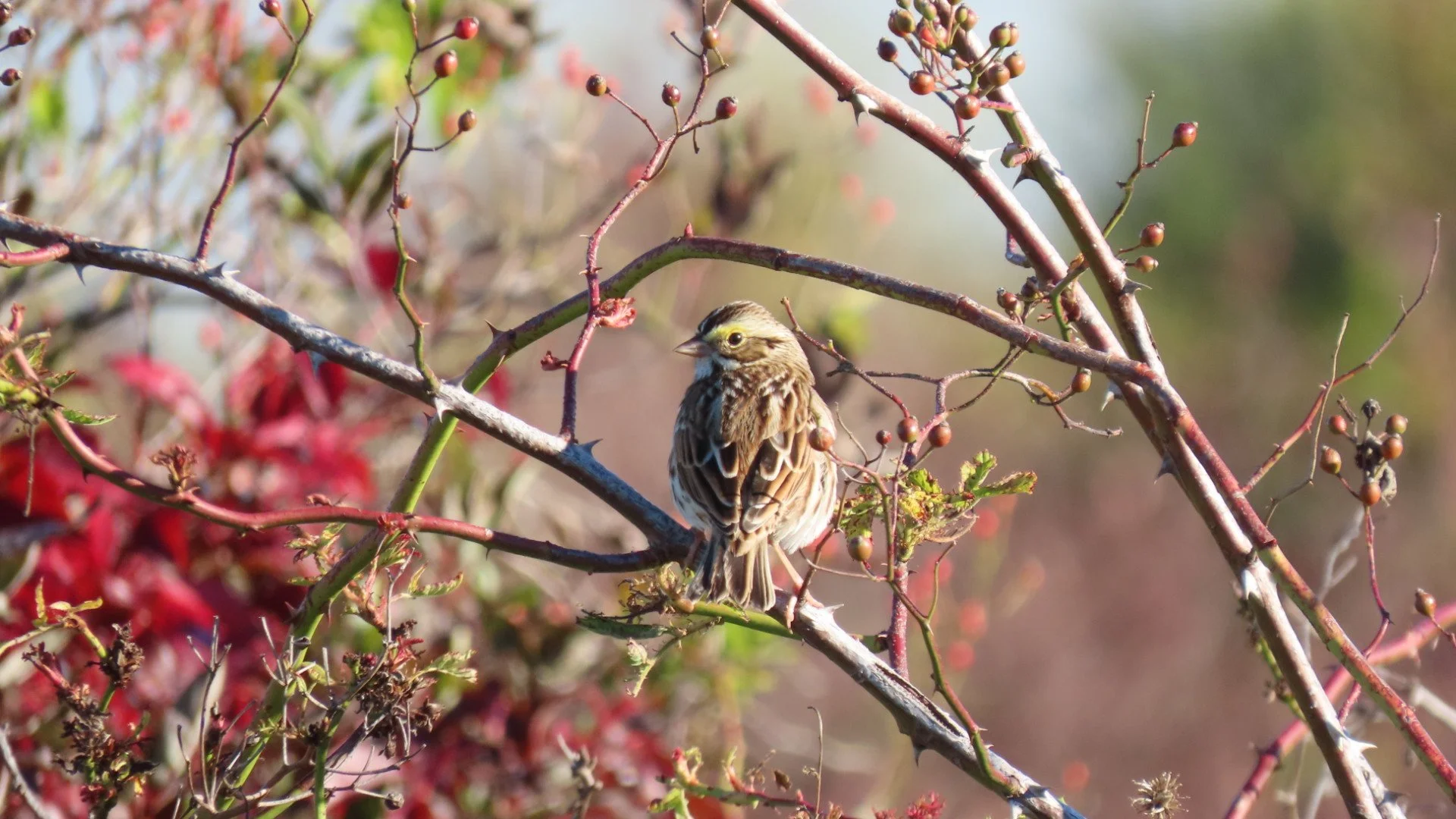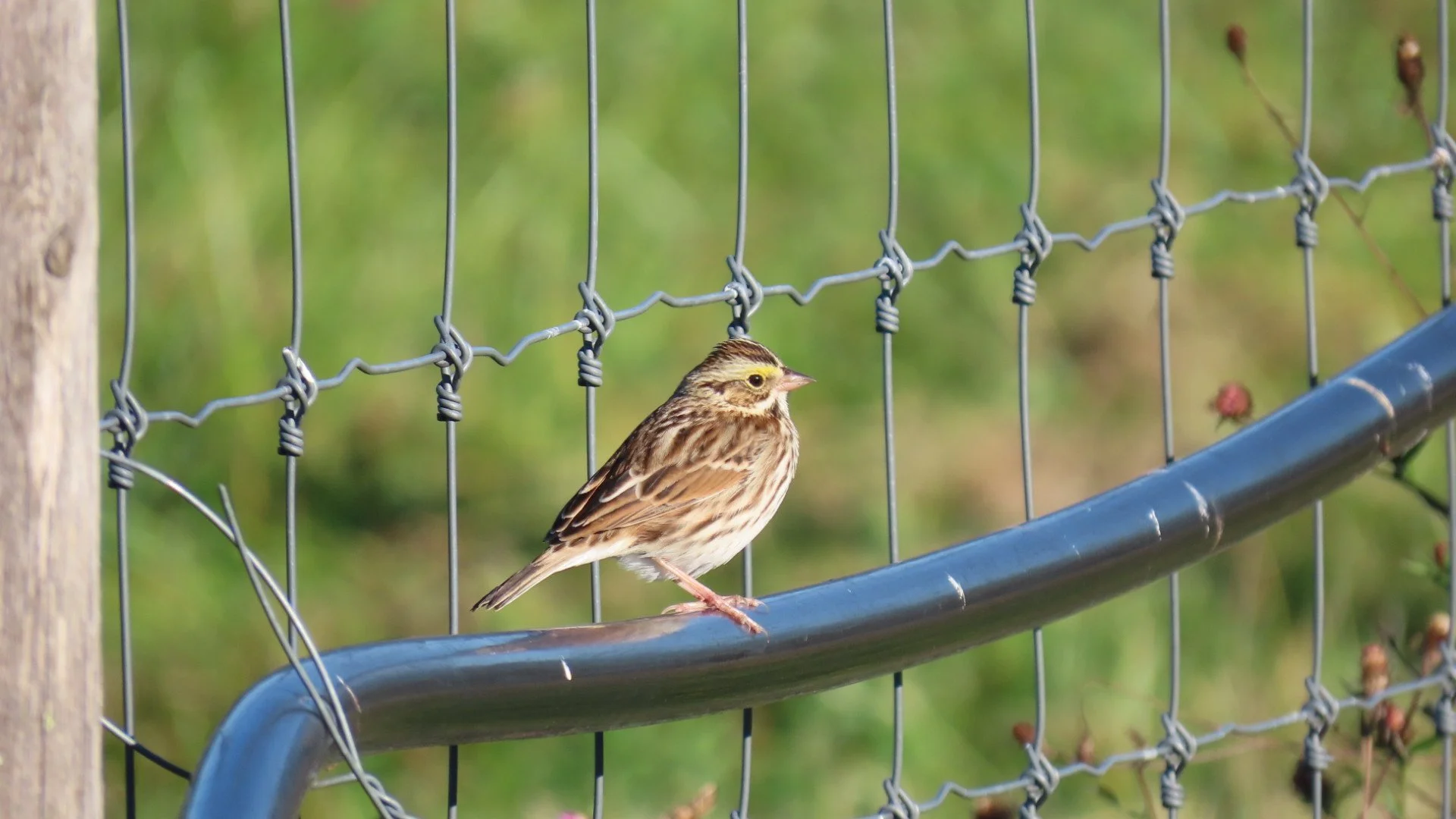Glynwood Bird Walk 2025
By Young Birder, Arabella P. - Oct. 2025
The day dawned cool and cloudy, with a brisk wind and a hint of rain (which, except for a few sprinkles, passed us, fortunately), and we welcomed the sweet songs of a flock of White-throated Sparrows who surrounded us. We began the morning by introducing Glynwood Farm, a 256-acre working farm complete with forests, fields, brushy habitats, and ponds – perfect for attracting a wide variety of avian species. Walking through one of Glynwood’s many fields, White-throated Sparrows and Song Sparrows anxiously chipped at our arrival as they shuffled through the underbrush searching for an early morning meal. A secretive Palm Warbler briefly perched on the fence post before disappearing into a clump of Goldenrod, a native plant that acts as a food source for migrating birds and insects alike, and a Winter Wren, hiding in the shrubbery alongside the path, sang its tinkling song. As we continued on, we noticed various invasive plant species, such as Asiatic Bittersweet, and Chicory. Chicory (also referred to as cornflower), a member of the dandelion family, can be found in disturbed soils (agricultural fields like the ones at Glynwood and on roadsides) and like many invasives and non-natives in North America, it was brought here by early European colonists. For coffee and history enthusiasts, chicory was used as a coffee substitute during the Civil War when Union troops blocked supplies to the South creating a shortage and causing coffee prices to rise to as high as $250 a pound. Southerners decided to experiment with whatever they had on hand, from cornmeal to okra to chicory. Apparently, chicory in one’s coffee tasted far better than cornmeal or okra for even today, chicory root is still consumed as a coffee substitute. Our group was comprised of bird enthusiasts rather than coffee enthusiasts, so we left the brilliant blue flowers of this invasive plant in place and continued searching for our feathered friends.
The chilly morning was in sharp contrast to the preceding days’ warm temperatures; Yellow-rumped Warblers, often referred to as “butterbuts” due to their vibrant yellow rump patches, gave their “check” and “psit” calls as they perched in trees that bordered the path, searching perhaps for any insects that might have survived the overnight cold spell, and Cedar Waxwings called their high “tsee” calls as they flew overhead. We passed into the forest, where an Eastern Towhee emitted its tow-hee call from the understory, and we paused to watch as White-throated Sparrows disappeared into thickets created by invasive and native vines. We scanned a grouping of trees covered in Poison Ivy in the hopes that birds would be feeding on its berries, which serve as an important food source due to their high caloric value, but the trees were bare of both birds and berries. We passed a Cedar Tree, noting that the berries that had fallen to the ground were evidence of animals feeding, and we strained our ears for the calls of Purple Finches, who have a fondness for these cedar trees. Although Purple Finches failed to make an appearance, we took some time to observe approximately sixty Cedar Waxwings preening and interacting in the tops of trees. As we resumed our walk to the fields, we caught sight of a murmur of European Starlings maneuver synchronously overhead – one of the most invasive birds in the history of North America but beautiful to watch with their glossy, iridescent plumage gleaming in the sunlight– and we heard the potato chip calls of American Goldfinches accompanying their bouncing, undulating flight pattern. Likely feeding on the numerous Poison Ivy berries, as well as the berries from the nearby Cedar trees, American Robins and Eastern Bluebirds, were also plentiful as they searched the trees.
We scanned a field, enclosed by fencing and bordered by shrubs, for Bobolinks, Dickcissels, sparrow species, and a Connecticut Warbler that had been spotted the day before. Although our hopes were not rewarded in the form of Connecticut Warblers or Bobolinks, we were treated to more Song and White-throated Sparrows – ubiquitous birds of the fall who seem to constantly shuffle about in vegetation searching for a meal while always keeping an eye out for predators. The nearby pond, which had dried up due to an ongoing lack of rain, gave us a chance to observe American Pipits, foraging in the mudflats for invertebrates and aquatic insects or seeds and any plant material that they might come across. Wood Ducks circled the pond and disappeared upon our arrival, and we continued to look for the Pectoral Sandpiper that had been seen the day before. Finally, we heard the calls of a sandpiper, and we watched with delight as the Pectoral Sandpiper burst into flight, circling the pond several times and emitting a raspy “creek” sound as it flew. It soon landed, where it proceeded to feed alongside Killdeer and Pipits, still foraging in the mud, only to again take off in a burst of energy, circle, and then again land. Finally, we were able to watch it walk through the drained pond searching for its next meal. After spending some time observing the trio of species, we began the journey back to our starting point whereupon we came across a male Pileated Woodpecker (our third Pileated Woodpecker for the day!), who called loudly and flew overhead, allowing us to capture photos.
As the sun broke through the cloud cover, we concluded our walk with a total of 34 species, both common and not so common but all beautiful in their own right.



